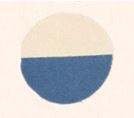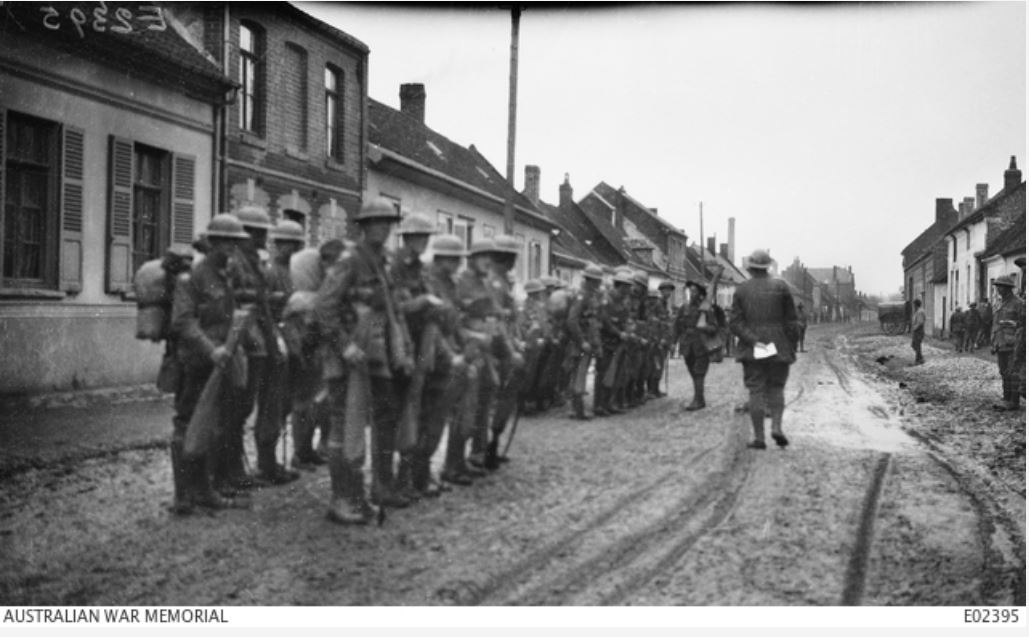52nd Battalion
From Our Contribution
 Shoulder patch | |
 Newly arrived reinforcements following Dernancourt on 4 Apr 1918. AWM photo E02395 | |
Contents
Brief History
The 52nd Battalion was raised at Tel el Kebir in Egypt on 1 March 1916 as part of the "doubling" of the AIF. Veterans from the 12th Battalion made up about half its strength, and the other half were new men from Australia. Like the 12th Battalion, the 52nd was originally a mix of men from South and Western Australia and Tasmania. From March 1916 onwards, the battalion’s reinforcements were men from Queensland. The 52nd was allocated to the 13th Brigade of the 4th Australian Division.
Arriving in France on 11 June 1916, the 52nd fought in its first major battle at Mouquet Farm on 3 September. Earlier it had played a support role to other units and missed the fighting. In this second, of 6 Australian attacks the 52nd had a key role and suffered heavy casualties- 50 per cent of its fighting strength. The battalion saw out the rest of the year alternating between front line duty, and training and labouring behind the line. This routine continued through the bleak winter of 1916-17.
Early in 1917, the battalion participated in the attacks that followed the German retreat to the Hindenburg Line, especially at Noreuil on 2 April. Later that year, the majority of Australian troops moved to the Ypres sector in Belgium. There the battalion was involved in the battle of Messines between 7 and 12 June and the battle of Polygon Wood on 26 September. Another winter of trench routine followed.
The German Army launched a major offensive on the Western Front at the end of March 1918. The 4th Division was deployed south to defend positions south of the River Ancre in France. At Dernancourt, on 5 April, the 52nd Battalion assisted in the repulse of the largest German attack mounted against Australian troops during the war. The German threat persisted through April, and on ANZAC Day 1918 the 52nd participated in the now legendary attack to dislodge the enemy from Villers-Bretonneux.
The defeat of the German offensive had come at a cost though. Due to heavy casualties and a lack of reinforcements from Australia, three brigades were directed to disband one of their battalions to reinforce the other three. The 13th Brigade was one of these, and on 16 May 1918 the 52nd Battalion was disbanded with most of its remaining men joining the 51st Battalion.
During the brief time that it existed it lost 649 men killed or died on active service and 1,438 wounded.
Battalion Personnel
- † Lawrence Adrian Renou DCM 1 Mar - 6 Nov 1916 (DOW Mouquet Farm)
- Frederick Selkirk 19 Apr 1916 - 16 May 1918 - to 51st Battalion
- William Grenfell 3 - 14 Mar 1916 - to 4th Division Artillery
Battle Honours
- Egypt 1916
- Somme, 1916-1918
- Pozières
- Bullecourt
- Messines, 1917
- Ypres, 1917
- Menin Road
- Polygon Wood
- Passchendaele
- Ancre, 1918
- Villers Bretonneux
- France and Flanders, 1916-18
Individual Honours
- 2 Distinguished Service Orders
- 17 Military Crosses, and 1 bar
- 8 Distinguished Conduct Medal
- 88 Military Medals, and 1 bar
- 1 Meritorious Service Medal
- 20 Mentioned In Despatches
- 5 foreign awards
Notes
Content for the history and honours sections has come from a combination of Wikipedia and the Australian War Memorial websites.